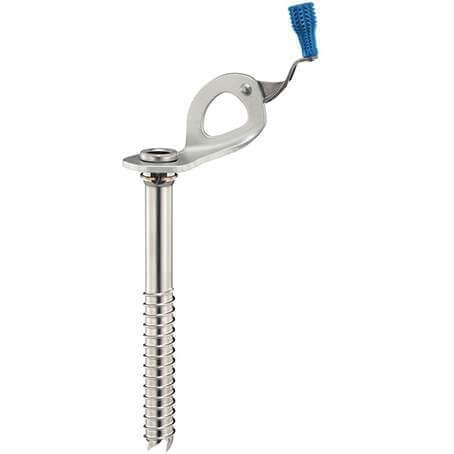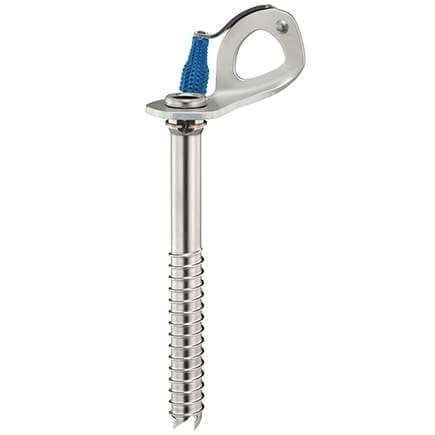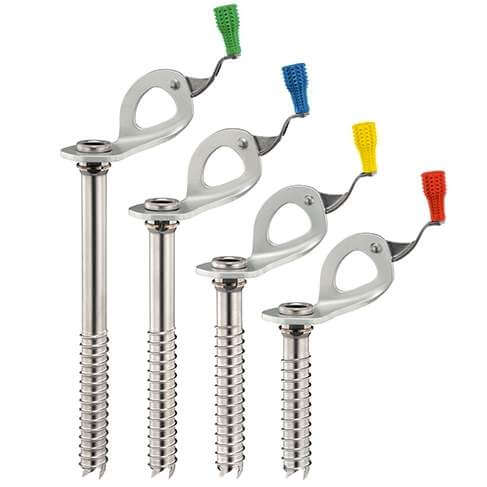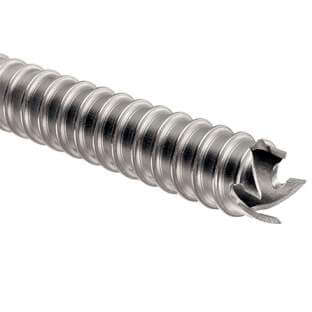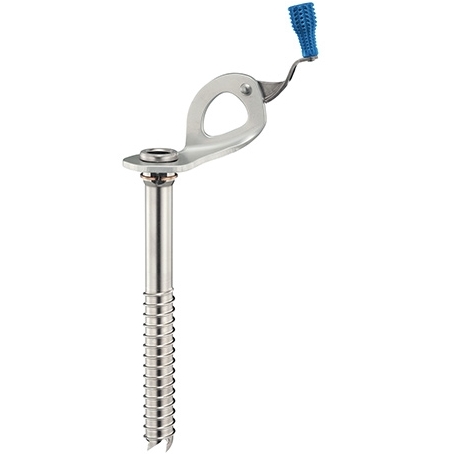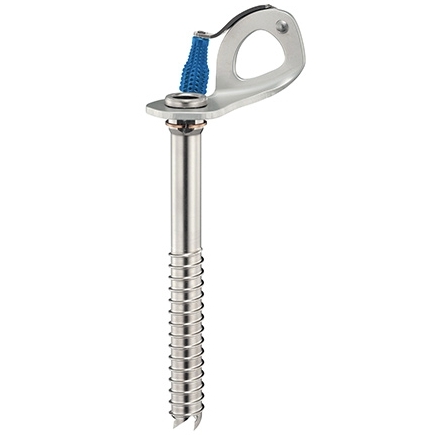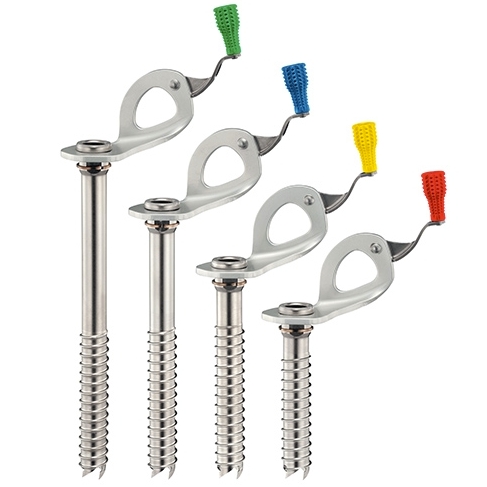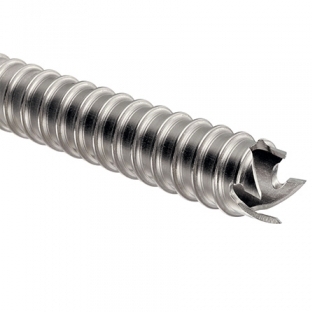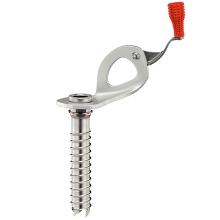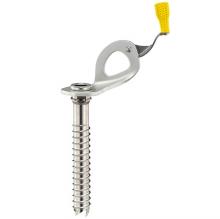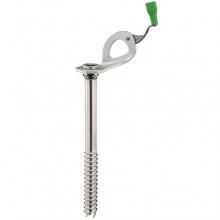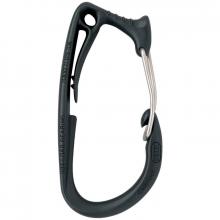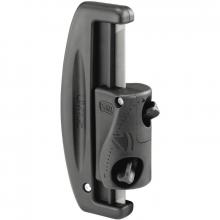Laser Speed 17cm 2019
Description
The LASER SPEED ice screw starts easily due to the optimized drill shape. Strength and durability are improved due to the steel tube and specific threading. The integrated flexible crank gives an optimized lever, making it easier and faster to screw in.
Retail price
This Product is Hard to Find.
We don’t know where you can buy this item online in the US. We’ll continue to check all the major retailers and will update this page as soon as we find one.
If you know where to find this online in the US, let us know, and we’ll add the link.
Weight (grams / ounces)  Weight (g / oz)In grams and ounces, the weight, as stated by the manufacturer / brand. | 143 g / 5.04 oz |
Length (cm)  Length (cm)Ice screws range between 6 - 30 cm. Generally speaking the sizes can be thought of as: Short - 13 cm and belowShort screws (“shorties” or “stubbies”) are for thin ice found on harder ice climbs and/or in crappy conditions. Medium - 14 - 17 cmWith ideal conditions climbers will be able to plug medium-sized screws with no problem. They have a nice weight to length balance. Long - 18 cm and aboveLong screws are most often used as anchors or in crappy ice conditions where they can go deep to find the real ice below. Mountaineers may also prefer long screws as they can gain better purchase in less than ideal ice and have less chance of melting out. How Many To CarryThere is no standard of how many screws to carry of each size. It will vary depending on where you’re climbing, your style of climbing and what level you’re climbing at. Some climbers will get a variety of the sizes, while others might get a majority of medium screws, a few shorties for thin spots and some long screws for anchors and bomber placements. Note: The amount of threading on each screw does not change even when the overall length changes (exception: e-climbs screws). |
17 cm |
Feature(s)  FeaturesNo Handle / KnobAbout 30% of the options 
Pros: Cheaper Cons: No “speed” handle/knob for faster threading Note: This is not currently a feature to filter on (coming soon), but is important to see the difference. Handle (non-fold)About 24% of the options 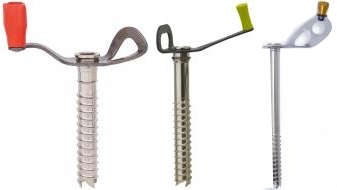
Pros: There is an extra “handle” or “knob” for faster screw threading. Cheaper than folding versions. Cons: Some of the knobs stick out substantially and could cause the rope or draws to get caught on the lengthened handle. Handle (folding)Around 42% of the options 
Pros: Foldable handle allows for quick threading and reduces snagging potential by folding out of the way. Cons: More expensive. Color CodingNearly 70% of the screws are color-coded, and this represents nearly all of the screws that have handles/knobs (color coding can also be on the hanger or the tube itself). 
Pros: Like on cams, color-coding makes for faster size identification. Cons: Generally color coding only comes on more expensive screws (with handles) There are 7 brands that follow red, yellow, blue, gray, green as a small to large standard, but that is not consistent across the industry. Sewn Sling (Pre-Attached to the Hanger)
Pro: You don’t have to carry quickdraws, so it saves weight and speed of clipping. Con: The length of this sling may not be ideal and it is not adjustable 2 Clip Points on the Hanger
Pro: More clipping options, especially ones that are closer to the ice to reduce leverage in a fall situation. Con: This comes standard on only a few screws so your options are limited. On some configurations this will also make the hanger much larger. Reverse Threading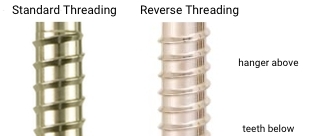
This is the most controversial feature. Grivel and CAMP (which make up 30% of the ice screw market) use reverse threading on all of their screws and claim that this angle is more effective at spreading an impact load across ice. If you are interested in the merits of the “reverse thread” design, click to see photos of the concrete tests (reverse threading pulls out more concrete than standard threading) and read about the concerns of testing in concrete. Read discussion of the engineering that goes into thread design and the questioning of straight pulls while testing to judge if reverse threading would make a [significant] difference in the event of a fall on ice. |
Folding Handle Color Coding |
Strength (kn)  Strength (kN)In kilonewtons, the strength as stated by the manufacturer / brand. |
|
Materials  MaterialsHangerThe material of the ice screw hanger (what you'd be clipping a carabiner into). Expect Stainless steel or aluminum here. TubeThe material of the tube of the ice screw (aka shaft). Most often it'll be Chromoly or steel but Grivel, Petzl and e-climb (and perhaps others) offer an aluminum tube ice screw option. Nearly 90% of ice screws are made from steel because steel is stronger and more durable. Aluminum screws will dull and wear out much faster and are not designed for crag-style ice climbing. They are specialty ice screws best used for fast and light ascents. TeethThe material of the teeth. Most often the tube material and the teeth material will be the same (e-climb and Petzl are exceptions). Often, screws with aluminum tubes will have steel teeth to help with durability. | Hanger: Aluminum Tube: Steel Teeth: Steel |
Certification  CertificationsThe main climbing gear certifications are CE and UIAA--and normally the UIAA creates the rules that the CE body also supports. When possible, we try to list all the certifications the product carries. To sell a climbing product in Europe, the device must be CE certified. There are no official requirements to sell climbing gear in the US. The UIAA certification is a voluntary process. Ice screws are not certifiable below 10cm. Learn MoreRock and Ice Certifications Guide |
CE, UIAA |
No reviews yet.
These are the best ice screws i've tried, and i've used all the ones readily available in North America. They bite fast and crank in very well. I'd prefer a longer hanger and two biner holes but i can live without both. Besides the aluminum ones seem to weigh nothing at all and the weight savings is hard to live without.
We try to simulate all activities with our testing, but stopped short of taking falls on the Petzl Laser Speed Ice Screws. However, given the design and ease of driving these screws we them a big thumbs up. In addition to the Laser Speed Ice Screw, Petzl has also just released the Petzl Speed Ice Screw. All the same features except the color coded fold out handle. Check them both out.
“Hands down, the easiest screw I have ever used for starting in hard ice,” said one ecstatic tester after deploying Petzl’s new screws on water ice all over Colorado. Petzl optimized the aggressive steel teeth on the Laser series by lengthening them, and it shows with the increased ease of placement. “I rarely failed to start the screw with just one jab, which is a real blessing when you’re pumped,” another tester said. Laser Speed screws (four sizes, 10 to 21cm) have a fold-up crank that nestles nicely against the hanger when racked on your harness, and the Laser screws (three sizes, 13 to 21cm) are crankless to save weight. Color-coded handles on the Laser Speeds delineate length so you can grab the right one at a glance. Testers loved these screws, so look out for summer 2014’s newest iteration, an even lighter version: the Laser Speed Lite, with an aluminum shaft and hanger and inset steel tip with the same quick-biting teeth. Our testers are already fighting over samples.
Warning: This video is dubbed in English. If you're getting antsy, skip to section 7:40-8:15 for one of the most interesting parts, where they show a hardware specific camera inspection.

